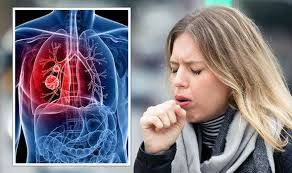Preventing Lung Cancer: Strategies, Awareness, and Lifestyle Changes
Introduction:
Lung cancer remains one of the most prevalent and deadly forms of cancer worldwide. According to the World Health Organization (WHO), it is estimated that lung cancer is responsible for nearly 2 million deaths each year. While certain risk factors such as genetic predisposition and environmental exposure to carcinogens are beyond our control, there are proactive steps individuals can take to reduce their risk of developing lung cancer. In this comprehensive guide, we will explore various strategies, lifestyle modifications, and awareness initiatives aimed at preventing lung cancer.
Understanding Lung Cancer:
Before delving into prevention strategies, it is crucial to understand the nature of lung cancer. Lung cancer occurs when abnormal cells in the lungs grow uncontrollably, forming tumors that can interfere with lung function and, if left untreated, spread to other parts of the body. The two primary types of lung cancer are non-small cell lung cancer (NSCLC) and small cell lung cancer (SCLC), with NSCLC being the most common.
Risk Factors for Lung Cancer:
Several risk factors contribute to the development of lung cancer, including:
1. Tobacco Smoke: Smoking cigarettes, cigars, or pipes is the leading cause of lung cancer. Tobacco smoke contains numerous carcinogens that damage the cells lining the lungs.
2. Secondhand Smoke: Exposure to tobacco smoke emitted by others increases the risk of lung cancer, particularly among non-smokers.
3. Radon Gas: Radon, a naturally occurring radioactive gas released from the ground, can accumulate in homes and increase the risk of lung cancer when inhaled over time.
4. Occupational Exposure: Certain occupations, such as mining, construction, and manufacturing, involve exposure to carcinogenic substances like asbestos, arsenic, and diesel exhaust, raising the risk of lung cancer among workers.
5. Air Pollution: Prolonged exposure to air pollutants, including particulate matter and chemical emissions from vehicles and industrial sources, has been linked to an increased risk of lung cancer.
6. Genetic Factors: Individuals with a family history of lung cancer may have a higher genetic predisposition to the disease.
Prevention Strategies:
While some risk factors for lung cancer, such as genetic predisposition, cannot be modified, there are effective prevention strategies that individuals can adopt to reduce their risk:
1. Quit Smoking: If you smoke, quitting is the single most effective step you can take to prevent lung cancer and improve overall health. Seek support from healthcare professionals, smoking cessation programs, or support groups to enhance your chances of successfully quitting.
2. Avoid Secondhand Smoke: Minimize exposure to secondhand smoke by creating smoke-free environments in your home and avoiding places where smoking is permitted.
3. Test for Radon: Test your home for radon gas, especially if you live in areas known for high radon levels. Radon testing kits are readily available and can help identify and mitigate radon exposure risks.
4. Limit Exposure to Carcinogens: If your occupation involves exposure to carcinogenic substances, follow safety guidelines, wear protective gear, and implement workplace controls to minimize exposure risks.
5. Maintain Indoor Air Quality: Take steps to improve indoor air quality by using air purifiers, ensuring proper ventilation, and avoiding the use of tobacco products indoors.
6. Adopt a Healthy Diet: A diet rich in fruits, vegetables, whole grains, and lean proteins provides essential nutrients and antioxidants that support overall health and may reduce the risk of lung cancer.
7. Exercise Regularly: Engage in regular physical activity to maintain a healthy weight and support lung function. Aim for at least 150 minutes of moderate-intensity exercise per week.
8. Practice Sun Safety: Protect your skin from harmful UV radiation by wearing sunscreen, protective clothing, and seeking shade, as certain skin cancers can metastasize to the lungs.
9. Get Vaccinated: Certain infections, such as the human papillomavirus (HPV) and the hepatitis B virus (HBV), have been linked to an increased risk of lung cancer. Stay up-to-date with vaccinations recommended by healthcare providers.
10. Attend Cancer Screening: For individuals at high risk of lung cancer, such as current or former smokers, regular screening tests such as low-dose computed tomography (LDCT) scans can help detect lung cancer at an early, more treatable stage.
Awareness and Education:
In addition to individual prevention efforts, raising awareness and educating communities about lung cancer risk factors, symptoms, and screening options is crucial for prevention and early detection. Community-based initiatives, educational campaigns, and healthcare provider training programs can help dispel myths, reduce stigma, and promote proactive health behaviors.
Conclusion:
Preventing lung cancer requires a multifaceted approach that addresses modifiable risk factors, promotes healthy lifestyles, and emphasizes the importance of early detection through screening and awareness initiatives. By adopting proactive measures such as quitting smoking, minimizing exposure to carcinogens, and prioritizing overall health and well-being, individuals can significantly reduce their risk of developing lung cancer and improve their long-term health outcomes. Together, through collective efforts at the individual, community, and societal levels, we can make strides in preventing lung cancer and reducing its burden on global health.


